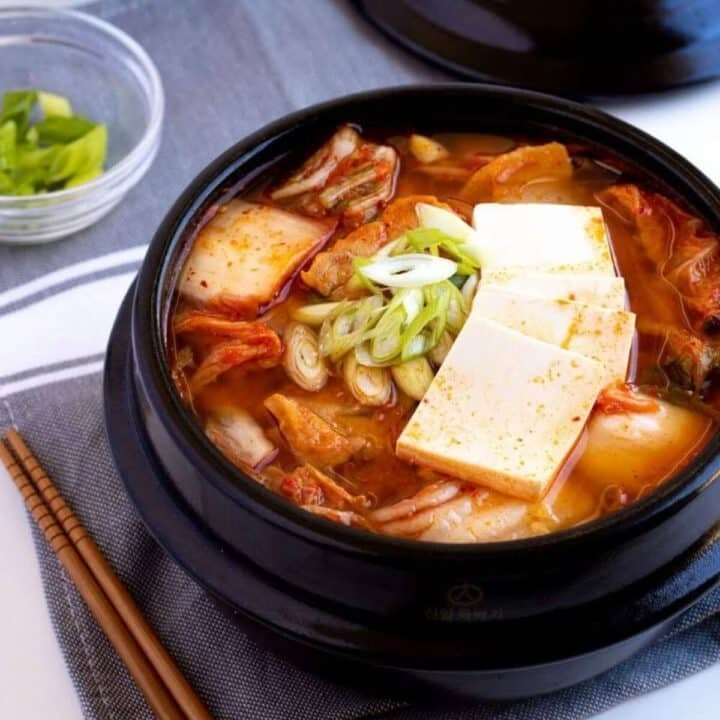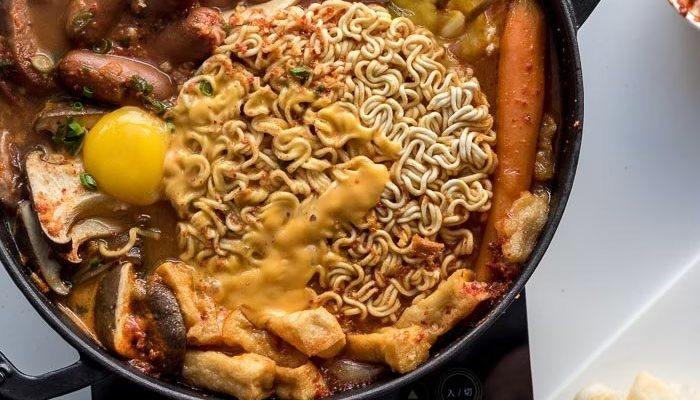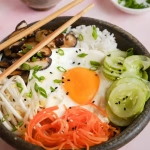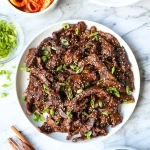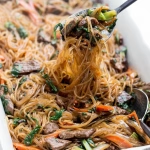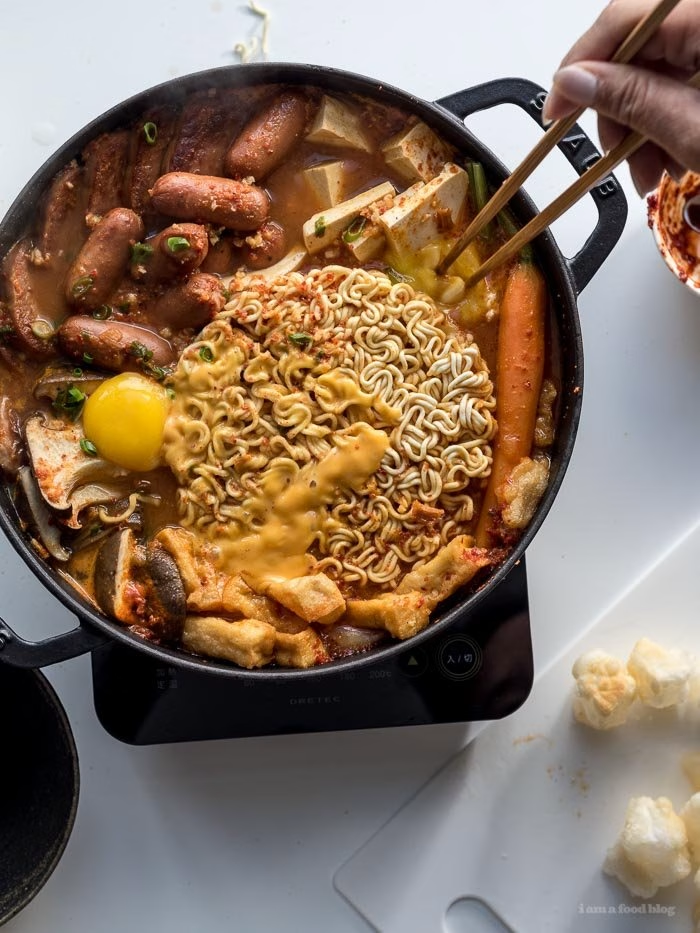
If you’re looking for a dish that warms both the heart and soul, look no further than Munjeon Jjigae (Korean-Style Omelet Stew). This delightful stew is not just a meal; it’s a cherished experience in Korean cuisine, celebrated for its rich flavors and comforting texture. Munjeon Jjigae combines the classic omelet with a savory broth and fresh ingredients, creating a unique culinary adventure that’s perfect for any season.
Originating from the kitchens of Korea, this dish reflects the country’s love for blending simple ingredients into harmoniously flavorful meals. As you read on, you’ll discover everything from Munjeon Jjigae (Korean-Style Omelet Stew) ingredients and variations, to step-by-step instructions on how to make Munjeon Jjigae (Korean-Style Omelet Stew) at home that will impress your family and friends.
Ingredients
| Ingredient | Measurement | Description |
|---|---|---|
| Eggs | 4 large | Rich in protein, eggs are the star of Munjeon Jjigae, providing a fluffy texture and delicious taste. |
| Vegetable Oil | 2 tbsp | This oil is essential for frying the omelet to a perfect golden brown. |
| Green Onions | 2 stalks, chopped | The fresh crunch adds layers of flavor and a pop of color to the stew. |
| Garlic | 2 cloves, minced | Fresh garlic enhances the aroma and depth of flavor in Munjeon Jjigae. |
| Carrots | 1 medium, sliced | The natural sweetness of carrots complements the savory elements beautifully. |
| Broth | 4 cups (chicken or vegetable) | A flavorful base that makes your Munjeon Jjigae rich and hearty. |
| Salt | to taste | Essential for enhancing the flavors of each ingredient. |
| Black Pepper | to taste | Gives a gentle kick and balances the richness of the eggs. |
Step-by-Step Instructions
- Prepare the Ingredients: Start by chopping your fresh vegetables like carrots and green onions. Don’t forget to mince the garlic! This prep work sets the stage for a flavorful Munjeon Jjigae (Korean-Style Omelet Stew).
- Make the Omelet: In a bowl, whisk together the eggs with a pinch of salt and pepper. Heat 1 tablespoon of vegetable oil in a pan over medium heat, pour in the egg mixture, and cook until the edges start to set. Carefully flip it and cook until fully set before removing it to rest on a cutting board.
- Cook the Base: In the same pan, add the remaining oil and sauté the garlic, green onions, and carrots until they soften and become fragrant. This step builds the base of flavor for your stew.
- Add the Broth: Pour in the chicken or vegetable broth, bring it to a gentle simmer, and season with salt and pepper. Let it cook for about 5 minutes to infuse the flavors.
- Slice the Omelet: While the broth simmers, slice the omelet into strips, and gently add it to the simmering broth. Allow it to soak up the flavors for another 5 minutes.
- Serve: Ladle the Munjeon Jjigae into bowls and enjoy hot! It’s delicious on its own, or serve it with a side of rice to soak up that wonderful broth.
Pro Tips
- Use Fresh Ingredients: The flavor of your Munjeon Jjigae depends heavily on the freshness of your vegetables and broth. Opt for organic when possible!
- Experiment with Proteins: Feel free to add proteins like tofu, shrimp, or chicken to make it a heartier meal.
- Customize Your Spices: If you’re a fan of spice, add a dash of gochugaru (Korean chili flakes) for a nice kick!
- Store Leftovers Properly: Munjeon Jjigae can be stored in the fridge for up to 3 days. Reheat gently on the stove for best results.
- Make It Ahead: You can prepare the stew base ahead of time and just add the omelet during serving for a quick meal!
Nutritional Information
| Nutrient | Per Serving |
|---|---|
| Calories | 250 |
| Protein | 15g |
| Carbohydrates | 18g |
| Saturated Fat | 3g |
| Fiber | 2g |
| Cholesterol | 200mg |
| Sugars | 2g |
| Fats | 12g |
FAQs
What is the best way to store Munjeon Jjigae (Korean-Style Omelet Stew)?
Store it in an airtight container in the fridge for up to 3 days. Reheat gently before serving.
Can Munjeon Jjigae (Korean-Style Omelet Stew) be made vegan or gluten-free?
Yes! Replace eggs and broth with vegan options and ensure your sauces are gluten-free.
What are the best side dishes to serve with Munjeon Jjigae (Korean-Style Omelet Stew)?
Pair with a side of steamed rice, kimchi, or pickled vegetables for a complete meal.
How long does it take to prepare Munjeon Jjigae (Korean-Style Omelet Stew)?
It usually takes about 30-40 minutes from start to finish.
Can I freeze Munjeon Jjigae (Korean-Style Omelet Stew) for later?
While it’s best enjoyed fresh, you can freeze the broth and reheat with fresh omelet later.
What can I use instead of broth in Munjeon Jjigae (Korean-Style Omelet Stew)?
Water mixed with seasonings can work in a pinch, but using broth enhances the flavor.
Is Munjeon Jjigae (Korean-Style Omelet Stew) spicy?
It is not inherently spicy, but you can add chili flakes or sauces if you prefer some heat!
Can I use different vegetables in Munjeon Jjigae (Korean-Style Omelet Stew)?
Absolutely! Feel free to use seasonal or favorite vegetables like bell peppers or zucchini.
In summary, Munjeon Jjigae (Korean-Style Omelet Stew) offers a heartwarming experience that merges comfort food with vibrant Asian flavors. It’s a dish that’s simple enough to make at home yet complex in taste and texture. Now that you’ve learned the recipe, don’t hesitate to try making Munjeon Jjigae for yourself! We’d love to hear about your culinary adventures. Tried this Munjeon Jjigae (Korean-Style Omelet Stew) recipe? Let us know your experience in the comments!
